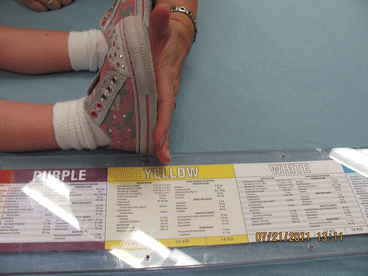
With this app we print out a list of emergency drugs (with doses in both mg and ml) specific to each child’s weight, for every child. My hospital subscribes to a service providing the on-line eDose app. View these as cognitive aides, not crutches.
#Broselow tape 2017 changes free
There are quite a few free or inexpensive pediatric dose calculation apps available for the computer and for your smart device or phone. Having someone check your math is a sign of wisdom, not weakness. It’s especially important to have someone else check your math for critical doses, especially of medications you rarely or never administer and especially if they are tiny. Don’t be afraid to write down the calculation and by all means do check it on a calculator. To avoid pediatric drug error, always check your math. In addition, during an emergency, everyone’s ability to do math is hampered. Doing a mental math pre-calculation alerts you if the number the calculator spits out looks bigger or smaller than expected.

Unfortunately, it’s easy to enter a wrong number or fail to type the decimal point in the right spot on a calculator. They live in a world of smart phones with calculators. Many of my younger SRNAs and residents struggle to do simple mental math because, to be honest, today’s society does not force them to practice. Changing from ml to mg requires math, and whenever math is involved, errors follow. The problem is that we administer liquid medications in ml. The Broselow system is easy to use, however, the tape gives the dosage of medications for each size child in mg. The Broselow system is designed for children less than about 12 years old or about 36 kg. The color band where the feet lie directs the user to a color-coded drawer with size appropriate equipment for that length child. You use the tape by measuring the length of the child from top of the head to the feet. The tape uses the child’s height (or length if treating a baby) to provide instructions regarding dosage of critical medications, the size of emergency equipment such as oral airways, endotracheal tubes and laryngoscope blades, and the level of shock voltage to use during a cardioversion or defibrillation. The system consists of a color coded cart and a Browlow measuring tape. Many of you have experience with the Broselow System, which was invented to fill the need of treating critically ill children when their age and weight is not known. It’s especially important to make the distinction between mg and ml because making that mistake often changes the patient’s dose significantly. Do I mean one ml, one mg, one gram, one liter? Sure, my nurse could guess correctly, but why chance it.
#Broselow tape 2017 changes code
If I’m in a code situation, and I tell my RN to “give one”, I am forcing my nurse to guess “one what”. However, it’s unfortunately common to give verbal orders without using units of dosage. Verbal orders are common when treating emergencies, when the time to write down an order does not exist. There are also multiple excellent pediatric dose calculator apps available for your smart phone devices. Before using an unfamiliar drug for any patient, especially a pediatric patient, look it up in the Physician’s Desk Reference (PDR), do a google search, call the pharmacy, or even ask a colleague. If you’re not used to treating pediatric patients, you may not know the dose per kg of the medications you use. Know the Correct Pediatric DoseĪvoiding pediatric drug errors starts with knowing the correct dose. As part of that process, I’ve been reviewing with my providers ways to avoid the potentially deadly problem of pediatric drug dosing errors as well as ways to avoid them. Let’s discuss some of the ways to make pediatric medication administration safer. Several of the scenarios involved pediatric cases. Considering that many of these errors occur in the smallest, and therefore most vulnerable, of our little patients, the potential impact is especially great.įor the last 3 months, I’ve been teaching critical event training classes for our OR and Perioperative RNs, Anesthesia MDs and CRNAs, and OR techs in preparation for opening our new hospital in San Diego. The literature states that medication errors occur in 5% to 27% of all pediatric medication orders, a very sobering number. Pediatric drug errors are unfortunately common.


 0 kommentar(er)
0 kommentar(er)
